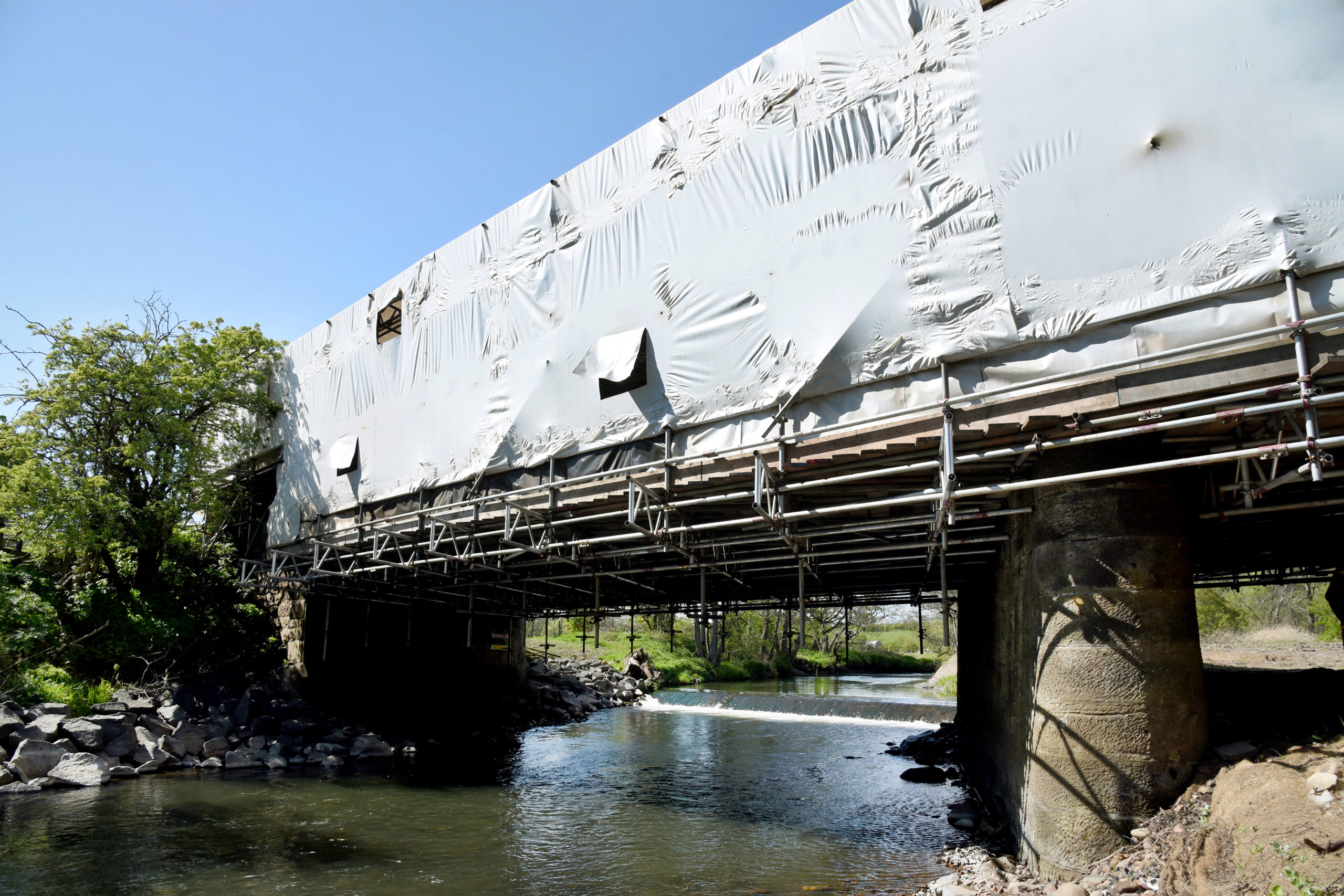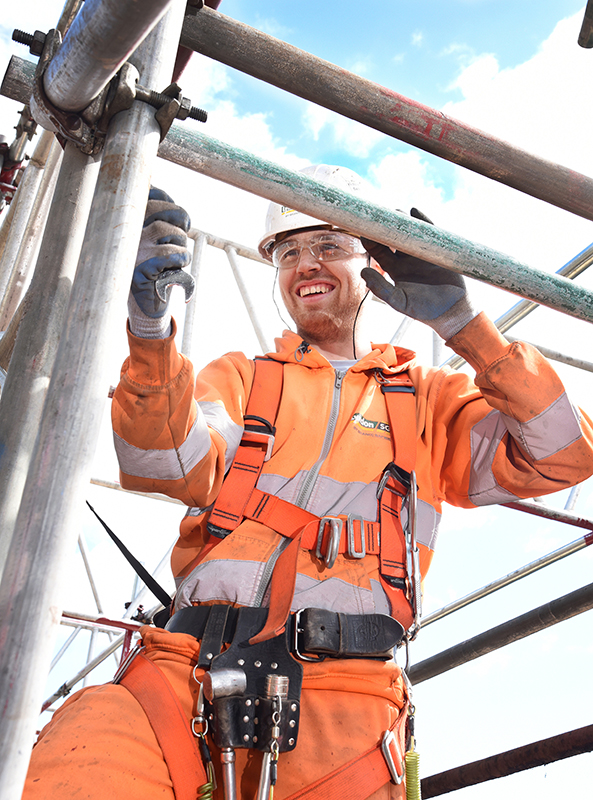
A senior project manager on the £116 million Levenmouth rail project has told of the team’s ‘pleasant surprise’ at the condition of 19th century bridges on the route, which are currently being worked on with the help of fully encapsulated scaffolding.
The new 9km line will bring rail travel back to the Levenmouth area for the first time since 1969. It will allow for the area to have a direct connection to Edinburgh and the wider mainline rail network, with two new stations to be established at Cameron Bridge and Leven, as well as active travel provisions.
The works are a collaborative project involving Network Rail and a host of partners, including AmcoGiffen, Atkins, Babcock, BAM, Siemens, SPL, Story, QTS, and RSAS.

Because the line’s previous route was deemed the most efficient for the new line, the project team is currently grit-blasting each of the five original crossings to remove old paint and strip them back to their original structure – with any required repairs then undertaken, new timber decks put down, a waterproof membrane installed, the structures repainted, and finally the tracks laid.
Taking Project Scotland on a tour of the works, Sean Clemie, a senior project manager on the works, explained the importance of a novel form of fully encapsulated scaffolding being used on the bridges which he likened to heat sealed packaging.
“Primarily, the encapsulation prevents anything we’re doing in the inside from getting out into the environment; the old paint systems that were used contain lead and of course rust, and we’ve got to prevent that from getting into the waterways and into the air,” Sean said, before revealing that it takes ‘typically’ three weeks to entirely blast down one of the crossings, with the materials then being hoovered out at the end of each day to prevent the scaffolding being overloaded.

“The encapsulation also allows for a good work environment inside,” he continued. “It’s dry and we can undertake our works to the highest standard, and the work will last longer because we’ve not got the ingress of water. If we were in a wet environment, you get high moisture levels and we would have to wait for a weather window to paint or the moisture really degrades the end product – and you wouldn’t get to that 25-year lifespan that we’ll get out of the paint system.”
A hard plastic called Cordex is installed on the underside of scaffold, to ensure there are no punctures – with some of the bridges spanning waterways. A ‘very thin’ plastic is then used around the outside. “Interestingly, once that material is on it is heat-sealed, then the internal environment is also heated up to bring it in tight,” Sean added, before likening it to a heat-sealed food product – with the purpose again being to ensure that nothing can escape into the environment.
Around four to six operatives have been used to install the tube and fitting scaffolding, with Sean saying the only difficult element has been the large beams that run from the bottom to the top. At times it was challenging to lift the beams, slide them under the bridge, and connect them from the hangers.

“Everyone on the project has been pleasantly surprised by the conditions of the structures, which is testament to the engineers who built them back in the 1800s,” Sean added. “It’s amazing to see what good quality is there, and we’re carrying out what’s very minor repairs to those structures in the grand scheme of the overall project. We’re putting the odd plate there, but overall the structures are in very good conditions, considering their age.”
Because the railway route lay disused for over half a century, Sean explained that it is not just managing the old infrastructure that they must be conscious of – but also the local wildlife, which he said has naturally ‘overtaken’ the route. Because of this, extensive surveys have been taken out along the line, with mitigations being put in place at each location to protect various species – with some otters even stopping by to watch scaffolding being set up!
“We’ve done things such as install bird and bat boxes, as well as netting in the off season to ensure no birds got into scaffolding,” Sean said. “We put bird boxes just off the railway, to ensure they were in the same environment but far enough away so that we’d have no impact on them.”

Many of the previous tracks have also been repurposed, to ensure minimal environmental impact. They went to local heritage groups, as well as buffer stops going into Glasgow Central Station’s museum. The project’s compound was also strategically placed in a Heritage Railway site, so it can be left permanently as a legacy for the visitor attraction for rail enthusiasts.
Moving forward, it is planned that the route will be operational by spring 2024. Sean said the project has been relatively unscathed by recent implications blighting the construction sector – such as the materials and skills shortages. Their use of flat plate has been ‘quite easy’ to source, and the local supply chain has been tapped into. What did cause issues, however, was the fuel shortage, with there being a ‘huge need’ to get fuel on site at one point. Extra protocols have also been put in place to guard against fuel theft.
“There’s been challenges, but we’ve overcome them,” Sean said. “There’s a lot of spoils to come from the project – we’ve got to dig out the old track bed, and we’re currently working through that to see how we take all the material in and out.
“But the project has been very good. We’re very much in the early stages, but there’s a real positive vibe about it from the local community, and all the contractors are keen to deliver what the local community envision.”








